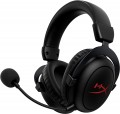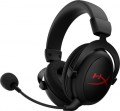Impedance
Impedance refers to the headphone's nominal resistance to AC current, such as an audio signal.
Other things being equal, a higher impedance reduces distortion, but requires a more powerful amplifier — otherwise the headphones simply will not be able to produce sufficient volume. Thus, the choice of resistance depends primarily on which signal source you plan to connect the "ears". So, for a portable gadget (smartphone, pocket player), an indicator of
16 ohms or less is considered optimal,
17 – 32 ohms is not bad. Higher values —
33 – 64 ohms and
65 – 96 ohms — will require quite powerful amplifiers, like those used in computers and televisions. And models with a resistance of
96 – 250 ohms and
above are designed mainly for Hi-End audio equipment and professional use; for such cases, detailed recommendations for selection can be found in special sources.
Sensitivity
Rated headphone sensitivity. Technically, this is the volume at which they sound when a certain standard signal from the amplifier is connected to them. Thus, sensitivity is one of the parameters that determine the overall volume of the headphones: the higher it is, the louder the sound will be with the same input signal level and other things being equal. However, we must not forget that the volume level also depends on the resistance (impedance, see above); moreover, it is worth choosing “ears” for a specific device first by impedance, and only then by sensitivity. In this case, one parameter can be compensated for by another: for example, a model with high resistance and high sensitivity can work even on a relatively weak amplifier.
As for specific figures, headphones with indicators of 100 dB or less are designed mainly for use in a quiet environment (in some similar models, the sensitivity
does not exceed 90 dB). For use on the street, in transport and other similar conditions, it is desirable to have more sensitive headphones — about
101 – 105 dB, or even
110 dB. And in some models, this figure can reach
116 – 120 dB. and even
more.
It is also worth noting that this parameter is relevant only for a wired connection according to the analogue standard — for example, via a 3.5 mm mini-
...jack. When using digital interfaces like USB and wireless channels like Bluetooth, the sound is processed in the built-in headphone converter, and if you plan to mainly use this kind of application, you can not pay much attention to sensitivity.Harmonic distortion coefficient
The coefficient of harmonic distortion produced by this model of headphones.
This parameter determines the amount of non-linear distortion introduced by the headphones into the reproduced sound. The lower it is, the less such distortions, the cleaner and closer to the original sound is. So, an indicator of 1% or more can be considered tolerable at best, from 0.5% to 1% — good, less than 0.5% — excellent (such indicators are acceptable even for monitor headphones), and less than 0.1% — almost perfect.
Note that a low harmonic coefficient in itself does not guarantee high-quality sound — a lot depends on other features of the headphones, primarily the frequency response.
Frequency range
The range of audio frequencies that the headphone's own microphone can normally "hear".
Theoretically, the wider this range, the more advanced and high-quality the microphone is, the closer the sound transmitted by it is to the real one. In fact, extensive frequency coverage is not always required. So, the working range of the human ear is about 16 – 22,000 Hz, and even then not everyone hears its upper part. And human speech usually covers frequencies from 500 Hz to 2 kHz, at least this range is considered quite sufficient for its transmission. So if you need a microphone for simple tasks like voice communication on the Internet or game chat, you can not pay much attention to the frequency range: even in the most modest models, it is more than sufficient for normal speech transmission.
Sensitivity
The sensitivity of the headphone's own microphone.
The more sensitive the microphone, the higher the signal level from it, at the same sound volume, and the better this model is suitable for picking up quiet sounds. Conversely, low sensitivity filters out background noise. At the same time, we note that these nuances are important mainly in professional work with sound. And for simple tasks like voice communication over the phone or via the Internet, sensitivity does not really matter: in headphones of this specialization, it is selected in such a way as to ensure that the microphone is guaranteed to work.
Microphone mute
The ability to turn off your own headphone microphone using a special button or switch.
This feature is relevant mainly for phone calls, Skype, etc. It is useful in situations where you need to distract from the main conversation and say something that the interlocutor does not need to hear. Disconnecting the microphone is easier and more reliable than covering it with your hand or disconnecting the headphones entirely.
Note that the
ability to turn off the microphone may be provided in the communication programme itself (the same Skype, for example). However, again, using the switch on the headphones is more convenient.
Charging time
The time required to fully charge the battery in properly powered headphones (see above).
In this case, we mean the battery charging time from 0 to 100% when using a standard charger (or a third-party charger with identical characteristics). Accordingly, in fact, this indicator may differ from the claimed one, depending on the specifics of the situation. However, in general, it is quite possible to evaluate different models and compare them with each other: headphones with a shorter claimed charging time will in fact charge faster (ceteris paribus).
Also note that an increase in battery capacity (and headphone battery life) inevitably implies an increase in charging time. To compensate for this moment, special fast charging technologies can be used — however, they affect the cost and require the use of specialized charger.
Operating time (music)
The declared operating time of headphones with autonomous power supply (see above) when listening to music on a single battery charge or a set of batteries.
As a rule, the characteristics indicate a certain average operating time in music listening mode, for standard conditions; in practice, it will depend on the intensity of use, volume level and other operating parameters, and in models with replaceable batteries - also on the quality of specific batteries. However, based on the stated time, you can fairly reliably assess the autonomy of the selected headphones and compare them with other models. As for specific values, relatively “short-lived” devices have a battery life
of up to 8 hours, a figure of
8 – 12 hours can be called quite good,
12 – 20 hours – very good, and in the most “long-lasting” headphones the operating time can
exceed 20 hours.
Material
The main material used for the headphone housing.
Most modern headphones are made of plastic: it is inexpensive and at the same time practical, easy to process and well suited even for complex shapes. For such models, the case material is not indicated at all. However, there are more specific options, they can be as follows:
— Metal. The main advantages
of metal cases are high reliability and a solid appearance — which also lasts quite a long time due to the resistance of this material to scratches. In addition, metal may also be the best option in terms of acoustics. At the same time, it costs much more than plastic, and therefore it is found mainly among fairly advanced models, including Hi-Fi class.
—
Tree. Due to the characteristic colour and texture, the wood gives the headphones a pleasant and stylish appearance. In addition, it is also pleasant to the touch, and for many users, the wooden surface is associated with a “warm” and “soft” sound, which can significantly affect the subjective perception of the sound of headphones. At the same time, in reality, such a case has little effect on the sound quality, and the actual acoustic characteristics of such models may be different. Moreover, wood is rarely used in its pure form, it is usually combined with other materials — in this case, we are talking about plastic, the combination of wood and metal is placed in a separa
...te paragraph (see below).
— Wood / metal. Usually, in this case, metal cases with wooden inserts are meant. See above for details on the features of these materials. Here we note that this option is considered more advanced than the “ordinary” tree (wood with plastic), however, it costs accordingly.
— Ceramics. Headphones typically use high-quality ceramics that are durable, reliable, and with advanced acoustic characteristics. At the same time, this material is very expensive. Therefore, it is found in single models, mainly in-ear "ears" of the top class — ceramics are not suitable for large cases, because such devices would be too fragile.
